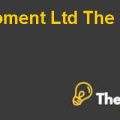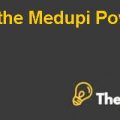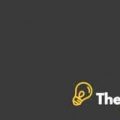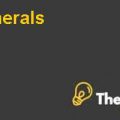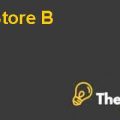
Douglas Global and Local competitors
Compass Group is the global competitor of Douglas, in almost every aspect of the value chain Compass group is competing with Douglas Company. Compass group has maintained its market share by focusing on the education and corporate hospitality, however, the group is now moving towards the supply of food services in the cafeteria of hospitals. Compass group is a highly strong competitor in terms of market share as well as financial strength that represent US$19.1 billion worth of the company. The other two competitors are Sodexo and Aramark. These are the current and big competitors for Douglas and their Total Revenue and EBITDA are as follows.
However, the local competitors include Diana Hospitality and William foods that pass strong market reputation due to which they are expanding day and night. West coast company is not a new entrant in the market, but have not extended their value chain from primary food services to educational instituted and as well as to the health care institute.
Strategic Issues At Douglas
Matthew Douglas is looking after the business because his elder brother has decided to abandon the business. Matthew has decided to purchase the rest of the required shares of the business to buy the firm.
The issue positioned by Matthew is the uniformity of the operating staff on work related issues. The employees are working on the obsolete methodologies, and if anyone wants to upgrade the system, then he will have to bear a huge amount of resistance from the workers. The buying, selling decision would highly involve a complete feasibility and a concrete reason for the buyout.
The Decision to Sell the business now
This strategic decision is highly affected by the unwillingness of the technical staff to learn new ways that were hindering the performance of the business. This situation was greatly, saying the CEO to move into a new business and sell the existing.The selling decision was based on the increased level of efforts made by Matthew to maintain the current level of success. The CEO wants to upgrade the business without changing the opinion of Douglas employees.
The decision to stay in business
The CEO is highly concerned about the future opportunity Douglas Fine Foods posses in the market. The industry analyst forecasted the upcoming downfall in the food and beverage industry that would affect nearly all the food business and growth of food companies will move downward by 4.6 percent. Matthew Douglas, the CEO of Douglas Fine Food, is looking forward to grab the opportunity to acquire the business which will be affected with this downfall.The sales services will shrink up to 2.5 percent, and the category services will go down by 3 percent, resulting in bankruptcy of small and noncommercial food players of the market. The CEO is now planning to acquire all those businesses to increase the operational expertise of the business. The option to stay in the current business is showing its pros to the CEO and other stakeholder. The takeover will increase the strength of the company in terms of increased number of employees, total revenue and EBITDA by five folds.
Organically Grown Organization
The organic growth of the company involves a set of comprehensive business development that increases the whole customer base and output per consumer. The organic growth allows the company to move for over expansionary policy which results in expanded sales opportunities, mass production capacity.Although organic growth is different from the scenario of mergers and acquisitions, but its benefits are quite similar to it in terms of increased resources and profitability generation activities. The organic growth rate does not include the impact of foreign exchange on the business.
The CEO has presented another option for the survival of the Douglas fine food company, which is that the company must go for the organic expansion. This step was revealing plenty of potential benefits for the company; the first advantage is the creation of well-being for the people who are tired of spending their money in government and privately owned business.
Similar to the organic growth, the organic input in an organization is sometimes the elimination of the nonproductive and cost generation part of the organization. In this way, we can also describe the scenario into the act of closing down the cost axis throughout the organization instead of waiting for a capital investment to turn the position of the company. Matthew came up with the idea of cost reduction by using low-cost strategy for the purchase of raw material with the help of strategic alliances. The CEO is of the opinion to grow the business either by the process of mergers and acquisition or with the help of innovation and consolidation............................
This is just a sample partial case solution. Please place the order on the website to order your own originally done case solution.



